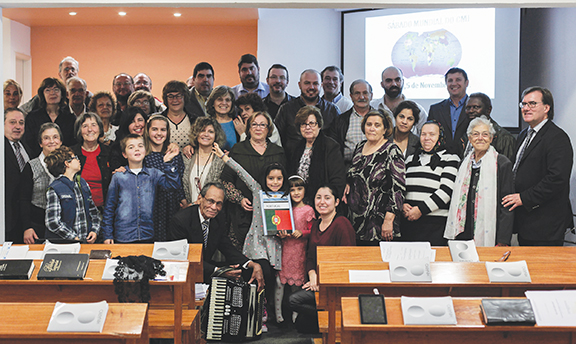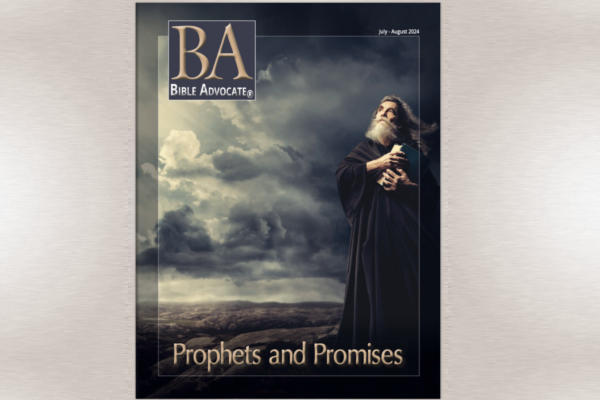Paul and other apostles evidently thought that the Messiah would return in their generation. Frequently, New Testament writers referred to their time as the “last days” or as the “last hour” (Acts 2:16, 17; Romans 13:11; Hebrews 1:1, 2; James 5:3; 1 John 2:18). These references suggest that all time since Christ’s first advent can be considered as the end time or last days” (This We Believe, p. 179).
In AD 70, when our brethren in Christ saw Jerusalem surrounded by the armies of Rome and the city and temple destroyed, surely many of them were convinced that those were the last days and that the second coming of Jesus was near. Christians of the fourteenth century thought the same when the Black Plague decimated about a third of the European population. The same has certainly happened with our brothers who witnessed the horrors and violence of World War II in the early 1940s. However, after all these years, Christ has not returned yet.
Were they totally wrong in their interpretation of the prophecies? Amazingly, it’s possible they were all right!
As suggested in the Church’s book of doctrine, This We Believe, from the biblical perspective, what we refer to as “the last days” is already a story two thousand years old. In fact, we have good grounds for this interpretation.
Battle in heaven
One of the key biblical texts to help us understand the beginning of the “last days” period is Revelation 12. In figurative language, this chapter approaches the conflict between good and evil as a determining event and marker of a “new age” of the life of humanity — namely, the expulsion of Satan from the heavens and his fall to the earth, with great wrath to influence human beings and persecute the church of God. The gravity of the situation is reinforced by the words of verse 12: “Therefore rejoice, you heavens and you who dwell in them! But woe to the earth and the sea, because the devil has gone down to you! He is filled with fury, because he knows that his time is short.”
We should note that the expression “he knows that his time is short” is clearly related to the concept of the last days.
When was Satan cast down to the earth in the wake of his defeat in heaven, ushering in the last days period? Revelation 12:11 says that the victory of the celestial battle between the forces of good and evil was achieved “by the blood of the Lamb.” Paul reinforces this idea in Colossians 1:20, where the apostle says that the cross of Christ had a redeeming effect, not only on earthly creation but also on the heavenly. He speaks more about this victory in 2:15: “having disarmed the powers and authorities, he made a public spectacle of them, triumphing over them by the cross.”
The infinite value of Jesus’ sacrifice raises a logical, easily understood conclusion: Satan suffered a decisive defeat almost two thousand years ago, when Jesus completed His redemptive mission of humanity on the cross.
Last battlefield
The war is not over. It has been transferred to earth as the last battlefield. But the final outcome is already determined on earth just as in heaven by the victory of our Savior Jesus Christ. The desperate effort of Satan in these last days is like the danger of a beast cornered, recognizing that these are his last days. The last two thousand years are proof of his despair, and the time that still remains, until the second coming of Jesus, will not fail to confirm this despair.
The words of Jesus reinforce this interpretation in a direct and clear way: “Now is the time for judgment on this world; now the prince of this world will be driven out” (John 12:31; cf. vv. 32, 33; Luke 10:17, 18).
The shedding of Jesus’ blood on the cross two thousand years ago was, is, and will be the striking point in the reconciliation between creation and the Creator. Integrating this into the text of Revelation 12, we can easily conclude that this moment in history is the beginning of the last days.
We may ask, Is it logical that the last days last for nearly two thousand years? If we look at this through the divine dimension, and not by limited human means, there is no contradiction. The apostle Peter wrote, “But do not forget this one thing, dear friends: With the Lord a day is like a thousand years, and a thousand years are like a day” (2 Peter 3:8).
[bctt tweet=”The understanding of the last days should warn us to take care of the salvation that God puts at our disposal. – Paulo Jorge Coelho”]
Consistent teaching
The foregoing arguments seem to support the suggestion of This We Believe, which heads this article. The biblical revelation that the last days began after the sacrifice of Jesus on the cross is consistent with the revelation of the New Testament, but it may appear strange to many misguided prophetic interpreters.
Above all, the understanding of the last days should warn us to take care of the salvation that God puts at our disposal. We must not let the devil and his hosts, definitively defeated two thousand years ago, take away our privilege to be victorious with Christ in this final war between life and death.
Let us keep this warning clearly in mind as we humbly go back to the laboratory of prophetic interpretation and reformulate our understanding as God reveals His light to us.
An extended version of this article is featured in the March-April 2012 issue of the Sabbath Sentinel (biblesabbath.org).







